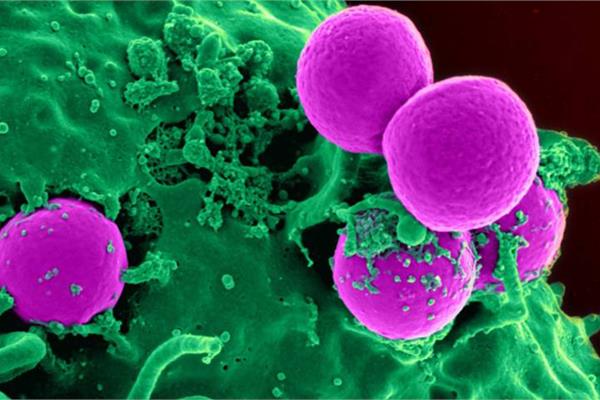
To stop the spread of disease, the new coating could be used to coat phone screens and keyboards, as well as the inside of catheters and breathing tubes, which are a major source of healthcare-associated infections (HCAIs).
A University College of London (UCL)-led team of researchers developed a new coating that activates in low intensity light to kill bacteria such as Staphylococcus aureus and Escherichia coli. The research, published in Nature Communications, is the first to show a light activated antimicrobial coating successfully killing bacteria in low intensity, ambient light (300 lux), such as that found in wards and waiting rooms. Previously, similar coatings needed intense light (3,000 lux), like that found in operating theatres, to activate their killing properties. The new bactericidal coating is made of tiny clusters of chemically modified gold embedded in a polymer with crystal violet - a dye with antibacterial and antifungal properties.
First author, Dr Gi Byoung Hwang (UCL Chemistry), said: "Dyes such as crystal violet are promising candidates for killing bacteria and keeping surfaces sterile as they are widely used to disinfect wounds. When exposed to bright light, they create reactive oxygen species, which in turn kill bacteria by damaging their protective membranes and DNA. This is amplified when they are paired with metals such as silver, gold and zinc oxide."
"Other coatings have effectively killed bacteria but only after exposure to UV light, which is dangerous to humans, or very intense light sources, which aren't very practical. We are surprised to see just how effective our coating is in killing both S. aureus and E. coli in ambient light, making it promising for use in a variety of healthcare environments," added Professor Ivan Parkin (UCL Chemistry), senior author and Dean of UCL Mathematical & Physical Sciences.
The team of chemists, chemical engineers and microbiologists created the bactericidal coating using a scalable method and tested how well it killed S. aureus and E. coli against control coatings and under different lighting conditions.
Sample surfaces were treated with either the bactericidal coating or a control coating before being inoculated with 100,000 colony forming units (CFU) per ml of either S. aureus and E. coli. The growth of the bacteria was investigated under dark and white light conditions between 200 - 429 lux.
They found that in ambient light, a control coating of crystal violet in a polymer alone did not kill either bacteria. However, in the same lighting conditions, the bactericidal coating led to a 3.3 log reduction in the growth of S. aureus after six hours and a 2.8 log reduction in the growth of E. coli after 24 hours.
"E. coli was more resistant to the bactericidal coating than S. aureus as it took longer to achieve a significant reduction in the number of viable bacteria on the surface. This is presumably because E. coli has a cell wall with a double membrane structure whereas S. aureus only has a single membrane barrier," explained study co-author Dr Elaine Allan (UCL Eastman Dental Institute).
The team unexpectedly discovered that the coating kills bacteria by producing hydrogen peroxide - a relatively mild reagent used in contact lens cleaner solutions. It works by chemically attacking the cell membrane, and therefore takes longer to work on bacteria with more layers of protection.
"The gold clusters in our coating are key to generating the hydrogen peroxide, through the action of light and humidity. Given the clusters contain only 25 atoms of gold, very little of this precious metal is required compared to similar coatings, making our coating attractive for wider use," commented senior author Professor Asterios Gavriilidis (UCL Chemical Engineering).
The research was funded by the Engineering and Physical Sciences Research Council, through the Advanced Flow Technology for Healthcare Materials Manufacturing (MAFuMa) project.